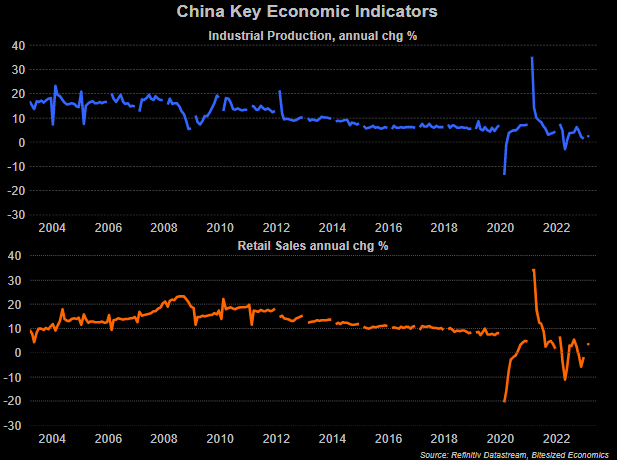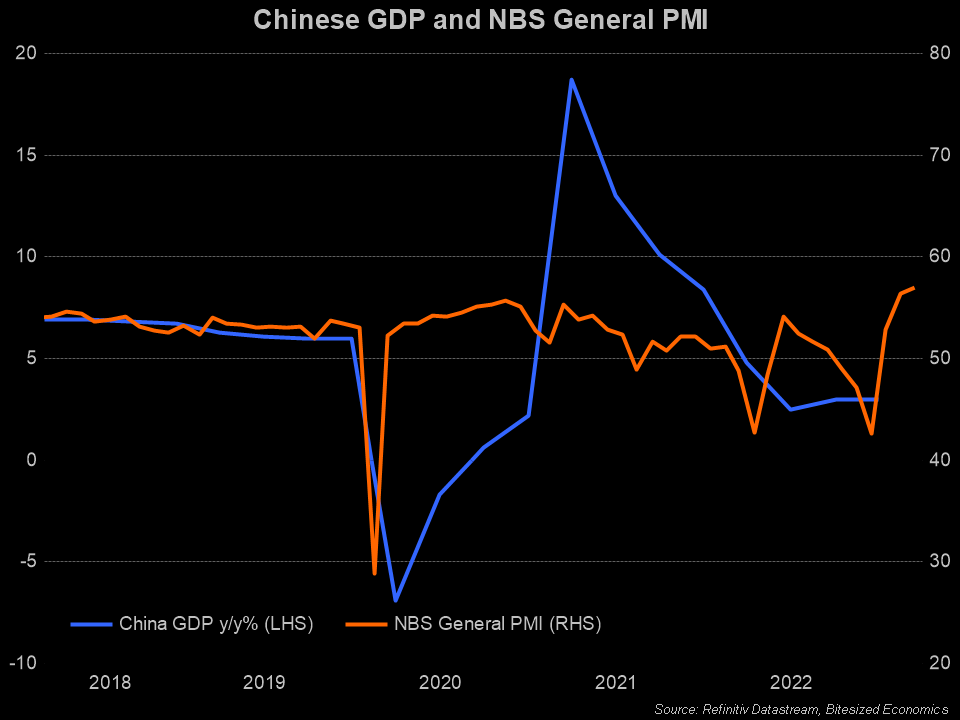Why you should still be optimistic on China’s re-opening
When China first began to back down from its zero covid policy, there was a lot of skepticism. Whether it was doubt about whether the country could handle the huge wave of cases or expectations that authorities would end up backing down on re-opening – the big u-turn caught many by surprise.
Now, months later, nearly all covid restrictions have now been lifted, and life is returning to some kind of normal. The government estimated that the wave at the turn of the year infected approximately 80% of the population, implying that covid restrictions are well and truly a thing of the past.
So, where are we now?
Just how is China’s economy is performing?
As expected, there has been a pickup in actual activity. But the pace of rebound has disappointed some analysts.

There are also those lingering concerns that have haunted China’s economy over the past few years. You could point to issues facing China’s economy despite its zero covid policy, including the slump in the housing market, the strain on local government finances and the impact of global geopolitical tensions on trade and foreign direct investment.
Also bear in mind that China didn’t receive the same scale of stimulus to consumers in comparison to say the US or Australia when lockdowns were in place. Some over-optimism on China’s re-opening might come from a lens where fiscal stimulus was focused towards the consumer.
But there is good reason to still be optimistic with regards to China this year.
Firstly, the effects from the end of zero covid are yet to be fully felt. After three years of on and off restrictions and isolation from the rest of the world, it can take time for confidence to return and for international travel to open up completely. Requirements for negative covid tests for travel to some select countries and from China remain in place and will in time likely be lifted.
Secondly, and most importantly, China’s pivot from zero covid was not just a shift on covid policy. There has been a fundamental shift in making the economy a key priority. This shift has been notable in speeches, official statements and policy decisions.
It also remains to be seen how much global sentiment towards China as a place for business, investment and trade will shift as covid restrictions become well and truly behind us. Diplomatic efforts with trading partners which have notably stepped up since zero covid was abandoned further highlight the shift in priorities towards the economy. Whether the Chinese government is successful in convincing the world, particularly the West, that China is back and ready to do business remains to be seen.
Another sign of active support to the economy comes from fiscal policy. Government spending has continued to increase steadily over the past year, allowances for increased borrowing for local governments have expanded and major infrastructure plans remain underway for this year.
While China’s economic growth target of 5% for this year being widely considered as cautious and the lowest in decades – this rate of growth is still a sizeable acceleration from the 3% growth recorded last year. It signals that fiscal stimulus, along with re-opening, should still result in a sizeable pickup in economic growth this year.
Even the battered housing market appears to have shown some signs of stabilization – home sales, construction and even new home prices are seeing their first signs of growth in over a year. While the removal of zero covid has been an important factor in supporting the housing market, a set of policy measures late last year have gone some way in restoring confidence in the sector.
PMI indicators, which can be more forward-looking, also continue to point to further strength in the economy ahead.

Implications
Further strength in China’s rebound suggests some upside for commodity demand, although this is somewhat offset by weakness elsewhere in the world due to tight monetary conditions. The big strength will likely come from the services sector, and tourism-related industries.
Of course, there are many longer-term growth challenges, from its fast aging and declining population growth to the ongoing overreliance of infrastructure investment spending to drive economic growth. The medium-term outlook remains uncertain. To say China is back for business is not going to be enough to prevent some level of decoupling in trade and investment with the West. Moreover, China’s government will need to provide an environment and policies that support businesses and the private sector.
In the meantime, however, China’s re-opening still has some way to go.
4 topics